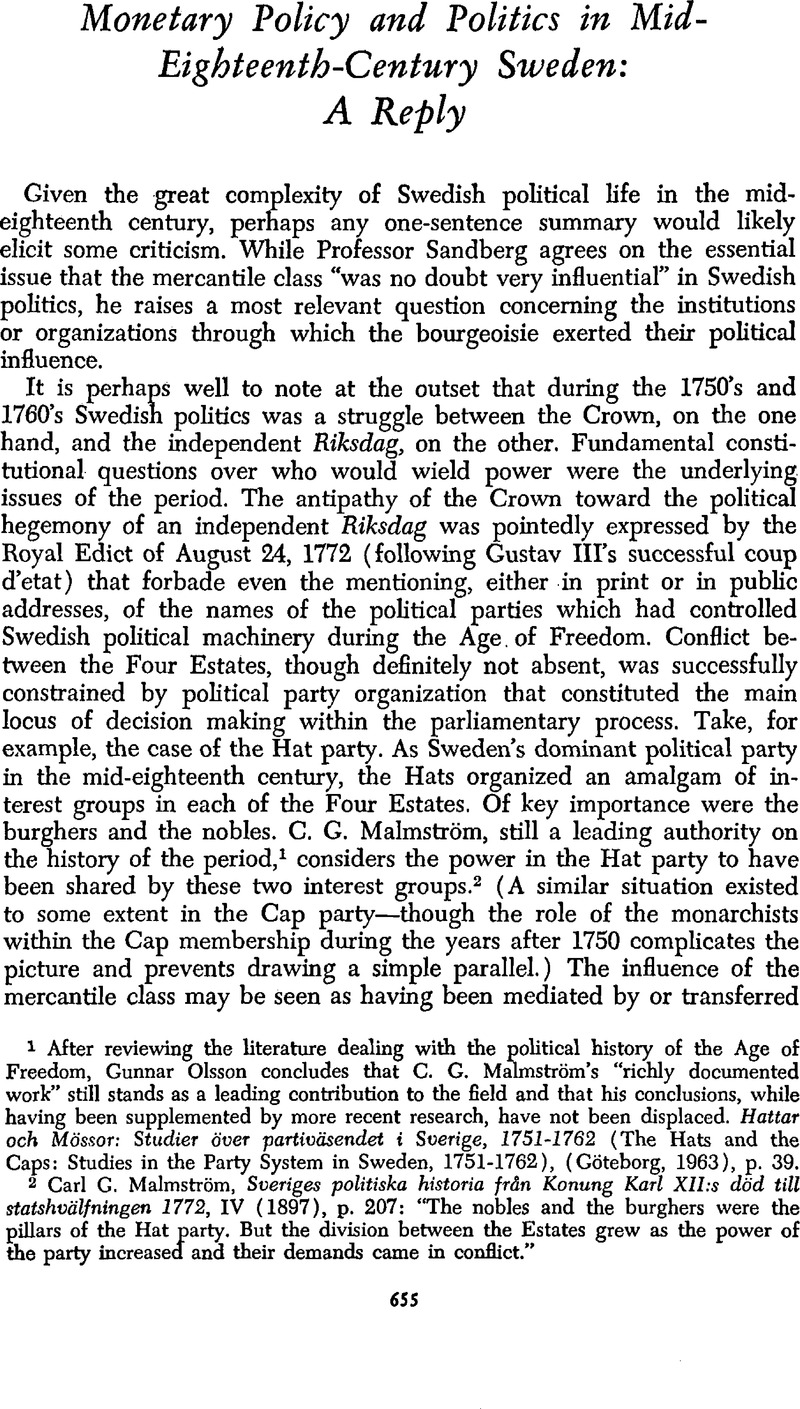No CrossRef data available.
Article contents
Monetary Policy and Politics in Mid-Eighteenth-Century Sweden: A Reply
Published online by Cambridge University Press: 03 February 2011
Abstract

- Type
- Notes
- Information
- Copyright
- Copyright © The Economic History Association 1970
References
1 After reviewing the literature dealing with the political history of the Age of Freedom, Gunnar Olsson concludes that C. G. Malmström's “richly documented work” still stands as a leading contribution to the field and that his conclusions, while having been supplemented by more recent research, have not been displaced. Hattar och Mössor: Studier över partiväsendet i Sverige, 1751–1762 (The Hats and the Caps: Studies in the Party System in Sweden, 1751–1762), (Göteborg, 1963), p. 39.
2 Malmström, Carl G., Sveriges politiska historia från Konung Karl XII:s död till statshvälfningen 1772, IV (1897), p. 207Google Scholar: “The nobles and the burghers were the pillars of the Hat party. But the division between the Estates grew as the power of the party increased and their demands came in conflict.”
3 Roberts, Michael, Essays in Swedish History (London: Weidenfeld and Nicolson, 1967), p. 272Google Scholar.
4 Gunnar Olsson, Hattar och Mössor, pp. 194 ff.
5 Eagly, Robert V., “Monetary Policy and Politics in Mid-Eighteenth-Century Sweden,” Journal of Economic History, XXIX, (Dec. 1969) No. 4, p. 739CrossRefGoogle Scholar.


